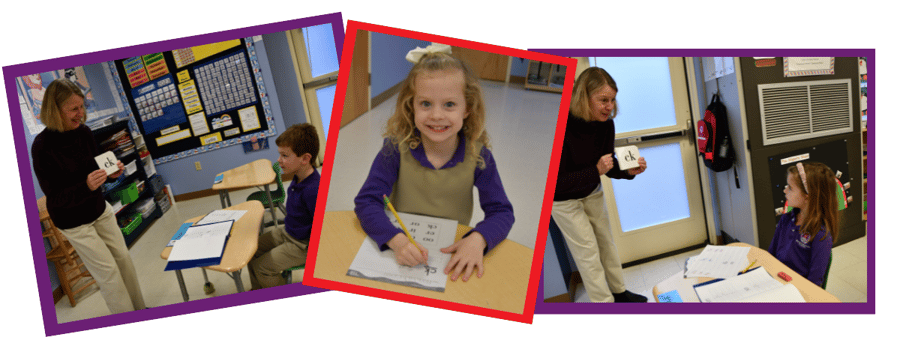
In classical education, phonograms provides a clear-cut, sequential, multi-sensory approach to learning to read. This primary and most basic component of a comprehensive phonics program makes learning the English language simple and effective.
The English language is a sound/symbol system. Focused phonics instruction teaches students the relationship between those sounds and symbols. Phonograms are the primary and most basic components of a comprehensive phonics program. The sounds that we speak (phonemes) are combined with the written letters or letter combinations (graphemes) that represent those sounds. This phoneme/grapheme relationship is called a phonogram. For example, the phoneme /ā/ as in apron has several graphemes such as a, ai, ay, ey, eigh.
In addition, students learn every sound a letter might make. The letter -o-, for example says “ah – o – oo – aw” as in “odd – over – do – cost.” This knowledge helps students as they sound them out to read.
In classical education, these phonograms are taught as a single subject using a multi-sensory approach. Students see the phonogram on a flash card, hear their teacher say the sound, say the sound back to the teacher, and then write the phonogram. When a sufficient number of phonograms has been mastered, students will be taught to put those phonograms together to encode (spell) words and decode (read) words.
What is unique about this approach is that students learn to encode before they learn to decode. It is easier for students to begin with encoding, which uses the auditory modality, and then follow with decoding, which utilizes the visual modality. The method follows the natural progression of language development.
For example, at Faith Christian School, kindergarten students begin learning phonograms for the letters in the alphabet, followed by multi-letter phonemes such as th, sh, ch, ow, ou, aw, au, and ee. They complete cut and past phonics sheets that ask them to sort the picture by beginning or ending sounds. They learn to say and write words using their phonics rules. Each succeeding grade level learns more phonograms and practices reading them in words and sentences of increasing difficulty. To further develop literacy skills, students are asked to narrate stories back to the teacher in their own words or they answer questions that encourage listening and speaking skills.
Additionally, teachers read to the students. We read excellent story books with wonderful illustrations as well as exciting chapter books where students have a difficult time waiting for the next chapter.
This clear-cut, sequential, multi-sensory approach makes learning the English language simple and effective.



-1.png?width=296&height=50&name=Back%20To%20All%20Stories%20(1)-1.png)